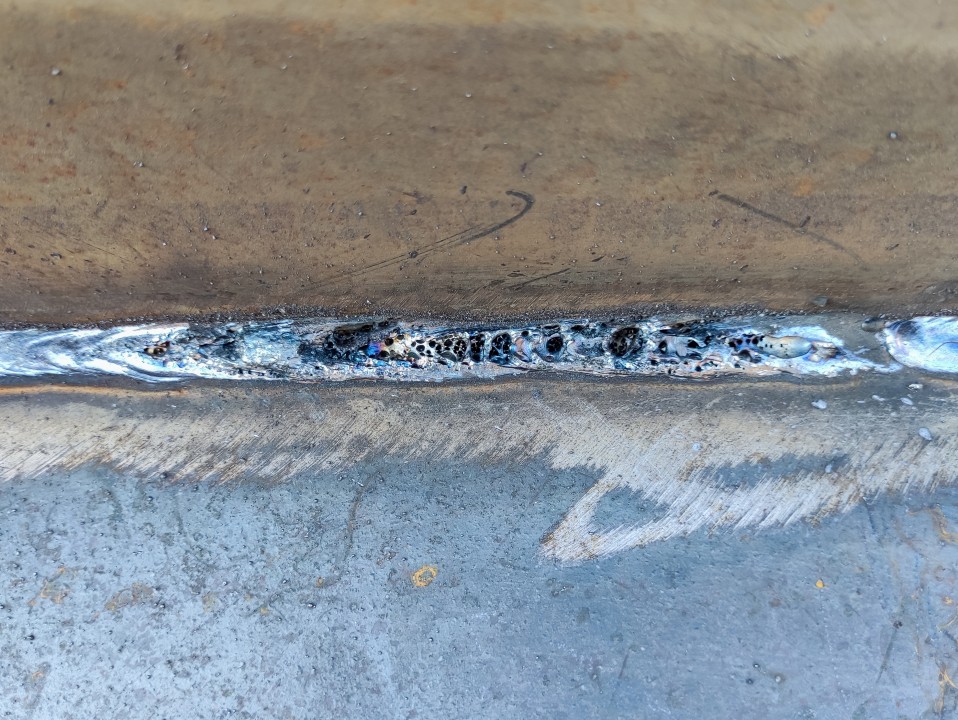Comprehensive Overview: What is Porosity in Welding and How to avoid It
Wiki Article
Porosity in Welding: Identifying Common Issues and Implementing Finest Practices for Avoidance
Porosity in welding is a prevalent issue that commonly goes unnoticed until it creates considerable issues with the honesty of welds. This common issue can endanger the strength and longevity of bonded structures, posturing safety and security threats and causing costly rework. By understanding the origin of porosity and carrying out efficient prevention approaches, welders can significantly boost the high quality and dependability of their welds. In this conversation, we will certainly check out the vital aspects adding to porosity formation, analyze its detrimental impacts on weld performance, and discuss the ideal practices that can be taken on to decrease porosity incident in welding processes.Typical Sources Of Porosity

One more frequent culprit behind porosity is the existence of impurities on the surface area of the base steel, such as oil, oil, or rust. When these impurities are not properly eliminated prior to welding, they can vaporize and come to be entraped in the weld, creating problems. Making use of unclean or wet filler products can introduce contaminations into the weld, contributing to porosity issues. To mitigate these typical root causes of porosity, thorough cleansing of base metals, proper shielding gas choice, and adherence to ideal welding specifications are crucial techniques in accomplishing high-grade, porosity-free welds.
Influence of Porosity on Weld High Quality

The visibility of porosity in welding can dramatically endanger the architectural honesty and mechanical buildings of welded joints. Porosity produces gaps within the weld steel, damaging its overall stamina and load-bearing ability. These gaps function as stress focus factors, making the weld a lot more prone to cracking and failing under used lots. In addition, porosity can reduce the weld's resistance to deterioration and various other environmental elements, even more decreasing its durability and performance.
Welds with high porosity levels have a tendency to exhibit reduced influence strength and minimized ability to deform plastically before fracturing. Porosity can impede the weld's capability to efficiently transfer forces, leading to early weld failing and prospective safety risks in crucial frameworks.
Finest Practices for Porosity Prevention
To boost the architectural integrity and quality of bonded joints, what particular procedures can be executed to decrease the occurrence of porosity throughout the welding process? Porosity prevention in welding is essential to make sure the integrity and stamina of the last weld. One effective technique appertains cleansing of the base metal, eliminating any contaminants such as rust, oil, paint, or moisture that might bring about gas entrapment. Guaranteeing that the welding tools remains in great problem, with tidy consumables and proper gas flow rates, can also dramatically minimize porosity. Furthermore, maintaining a stable arc and controlling the welding parameters, such as voltage, existing, and take a trip rate, assists create a consistent weld swimming pool that decreases the threat of gas entrapment. Utilizing the proper welding technique for the details material being welded, such as readjusting the welding angle and gun placement, can better prevent porosity. Normal examination of welds and prompt remediation of any issues recognized throughout the welding process are necessary methods to avoid porosity and generate top quality welds.Importance of Correct Welding Techniques
Applying appropriate welding techniques is vital in ensuring the architectural honesty and top quality of welded joints, developing upon the foundation of effective porosity avoidance steps. Welding techniques directly influence the overall stamina and resilience of the welded structure. One key aspect of correct welding methods is keeping the correct heat input. Too much heat can cause increased porosity as a result of the entrapment of gases in the weld pool. Conversely, not enough heat might lead to incomplete blend, producing possible weak factors in the joint. In addition, utilizing the ideal welding criteria, such as voltage, current, and take a trip visit this page speed, is essential for accomplishing sound welds with minimal porosity.Additionally, the option of welding process, whether it be MIG, TIG, or stick welding, should line up with the details requirements of the job to make certain optimal results. Appropriate cleaning and preparation of the base metal, as well as picking the appropriate filler material, are also important components of efficient welding methods. By sticking to these ideal techniques, welders can lessen the risk of porosity formation and generate top notch, structurally audio welds.

Checking and Quality Assurance Actions
Checking procedures are necessary to find and stop porosity in welding, making certain the strength and sturdiness of Full Report the last item. Non-destructive testing methods such as ultrasonic testing, radiographic screening, and visual examination are typically used to identify possible flaws like porosity.Conducting pre-weld and post-weld examinations is also important in keeping quality assurance standards. Pre-weld inspections involve verifying the materials, equipment settings, and cleanliness of the workspace to prevent contamination. Post-weld assessments, on the other hand, examine the last weld for any defects, consisting of porosity, and confirm that it satisfies specified requirements. Implementing a detailed top quality control plan that includes detailed screening procedures and evaluations is critical to decreasing porosity issues and ensuring the general quality of welded joints.
Verdict
Finally, porosity in welding can be an usual issue that affects the quality of welds. By identifying the typical reasons for porosity right here and applying ideal techniques for prevention, such as proper welding methods and testing measures, welders can make sure excellent quality and trustworthy welds. It is vital to prioritize prevention techniques to reduce the incident of porosity and keep the integrity of welded structures.Report this wiki page